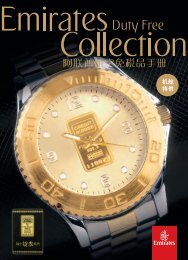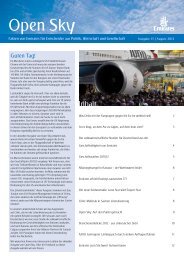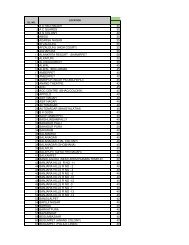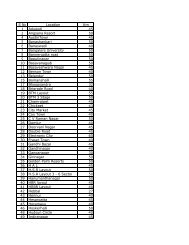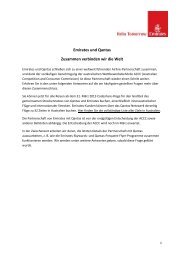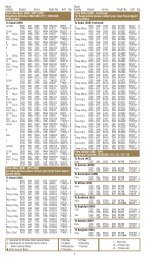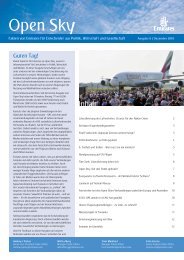Annual Report 2008-2009 - Emirates.com
Annual Report 2008-2009 - Emirates.com
Annual Report 2008-2009 - Emirates.com
You also want an ePaper? Increase the reach of your titles
YUMPU automatically turns print PDFs into web optimized ePapers that Google loves.
<strong>Emirates</strong><br />
080<br />
2. Summary of significant accounting policies (continued)<br />
Available-for-sale financial assets<br />
Available-for-sale financial assets are non-derivative financial assets that are either designated in this category or not classified as loans<br />
and receivables, held-to-maturity financial assets or financial assets at fair value through profit or loss. Such investments are initially<br />
recognised in the consolidated balance sheet on the trade date at fair value including transaction costs. Assets in this category are<br />
included in non-current assets unless management intends to dispose of the investment within 12 months of the balance sheet date.<br />
The investments are derecognised when rights to receive cash flows have expired or have been transferred along with substantially all the<br />
risks and rewards of ownership.<br />
Quoted investments are subsequently measured at their fair value based on quoted bid prices.<br />
Unquoted investments in this category are stated at fair value or at cost less impairment when fair values cannot be reliably measured.<br />
Unrealised gains and losses arising from change in fair value are recognised in the fair value reserves in equity until the investment is sold<br />
or impaired, at which time the cumulative gain or loss previously recognised in equity is included in the consolidated in<strong>com</strong>e statement.<br />
At each balance sheet date an assessment is made whether there is any objective evidence of impairment. In such instances, the<br />
cumulative loss - measured as the difference between the acquisition cost and the current fair value, less impairment loss previously<br />
recognised in the consolidated in<strong>com</strong>e statement - is removed from equity and recognised in the consolidated in<strong>com</strong>e statement.<br />
Held-to-maturity financial assets<br />
Non-derivative financial assets with fixed or determinable payments and fixed maturity that management has the intent and ability to hold<br />
to maturity are recognised in the consolidated balance sheet on the trade date as held-to-maturity financial assets. Such investments are<br />
initially recognised at fair value including transaction costs and carried at amortised cost using the effective interest method. The<br />
investments are derecognised when rights to receive cash flows have expired or have been transferred along with substantially all the<br />
risks and rewards of ownership.<br />
At each balance sheet date, an assessment is made whether there is any objective evidence of impairment. Where necessary the<br />
carrying amount is written down through the consolidated in<strong>com</strong>e statement to the present value of expected future cash flows<br />
discounted at the effective interest rate <strong>com</strong>puted at initial recognition.<br />
Loans and receivables<br />
Loans and receivables are non-derivative financial assets with fixed or determinable payments that are not quoted in an active market.<br />
Such amounts are initially recognised at fair value including transaction costs and carried at amortised cost using the effective interest<br />
method. The amounts are derecognised when rights to receive cash flows have expired or have been transferred along with substantially<br />
all the risks and rewards of ownership.<br />
At each balance sheet date, an assessment is made whether there is any objective evidence of impairment. Where necessary the<br />
carrying amount is written down through the consolidated in<strong>com</strong>e statement to the present value of expected future cash flows<br />
discounted at the effective interest rate <strong>com</strong>puted at initial recognition.<br />
Derivative financial instruments<br />
Derivative financial instruments are initially recognised at fair value on the date a derivative contract is entered into and are subsequently<br />
measured at their fair value. Derivatives are designated either as a hedge of the fair value of a recognised asset or liability or of a firm<br />
<strong>com</strong>mitment (fair value hedge) or a hedge of the exposure to variability in cash flows that is attributable to a particular risk associated with<br />
a recognised asset or liability or a highly probable forecast transaction (cash flow hedge). Fair values are obtained from quoted market<br />
prices, discounted cash flow models and option pricing models as appropriate. All derivatives are carried as assets when fair value is<br />
positive and as liabilities when fair value is negative.





